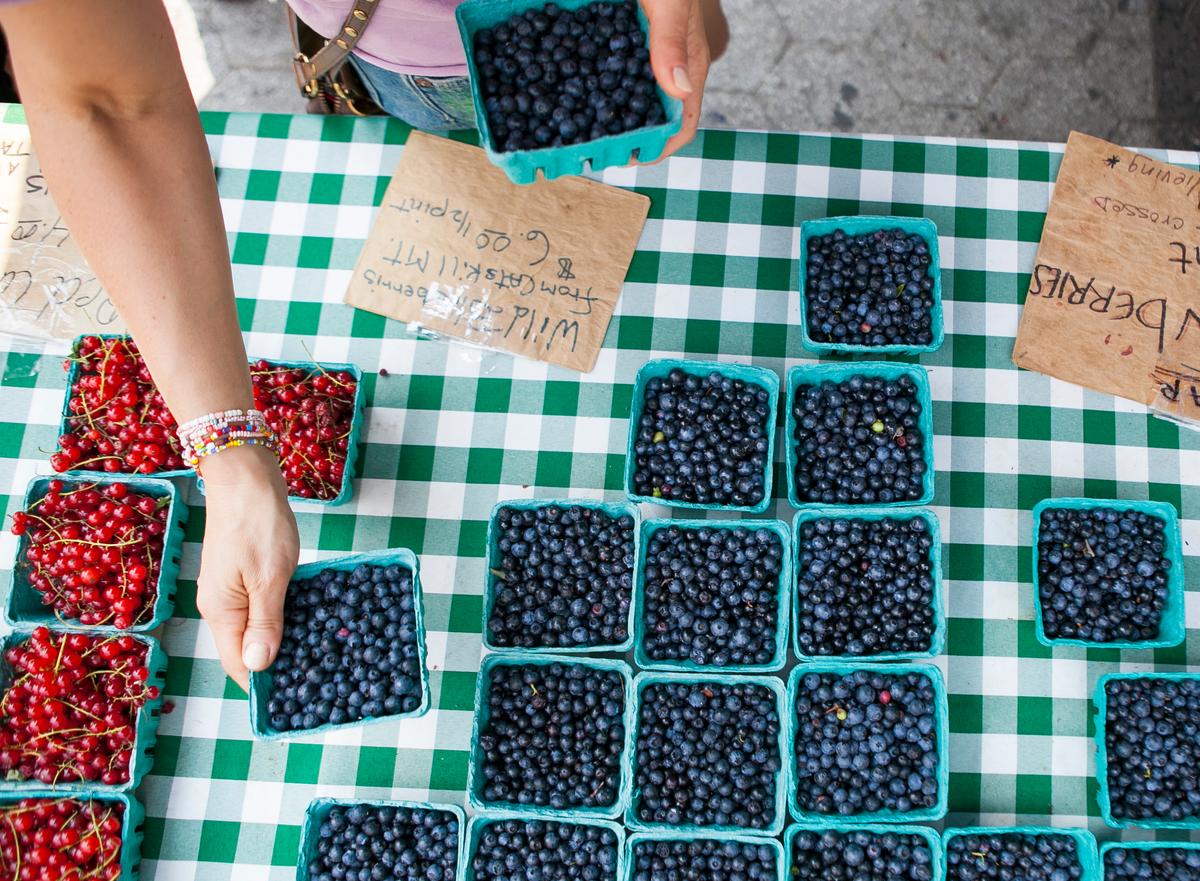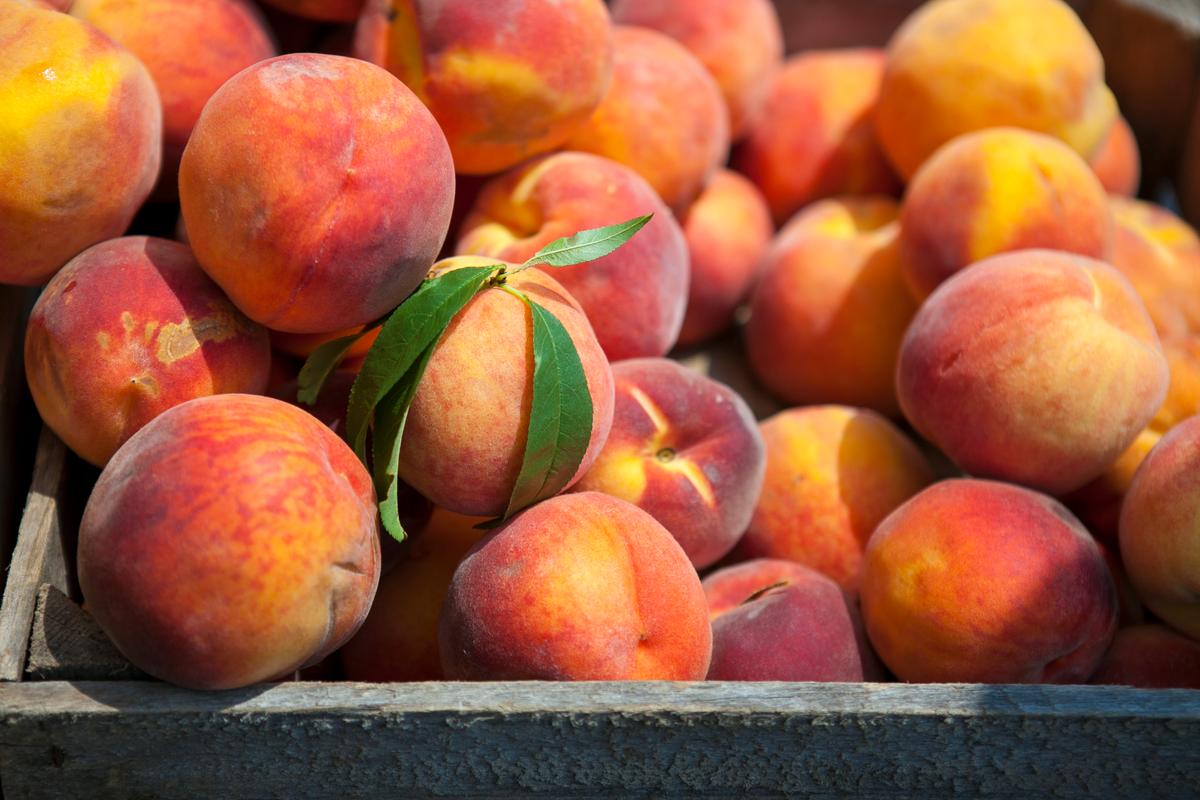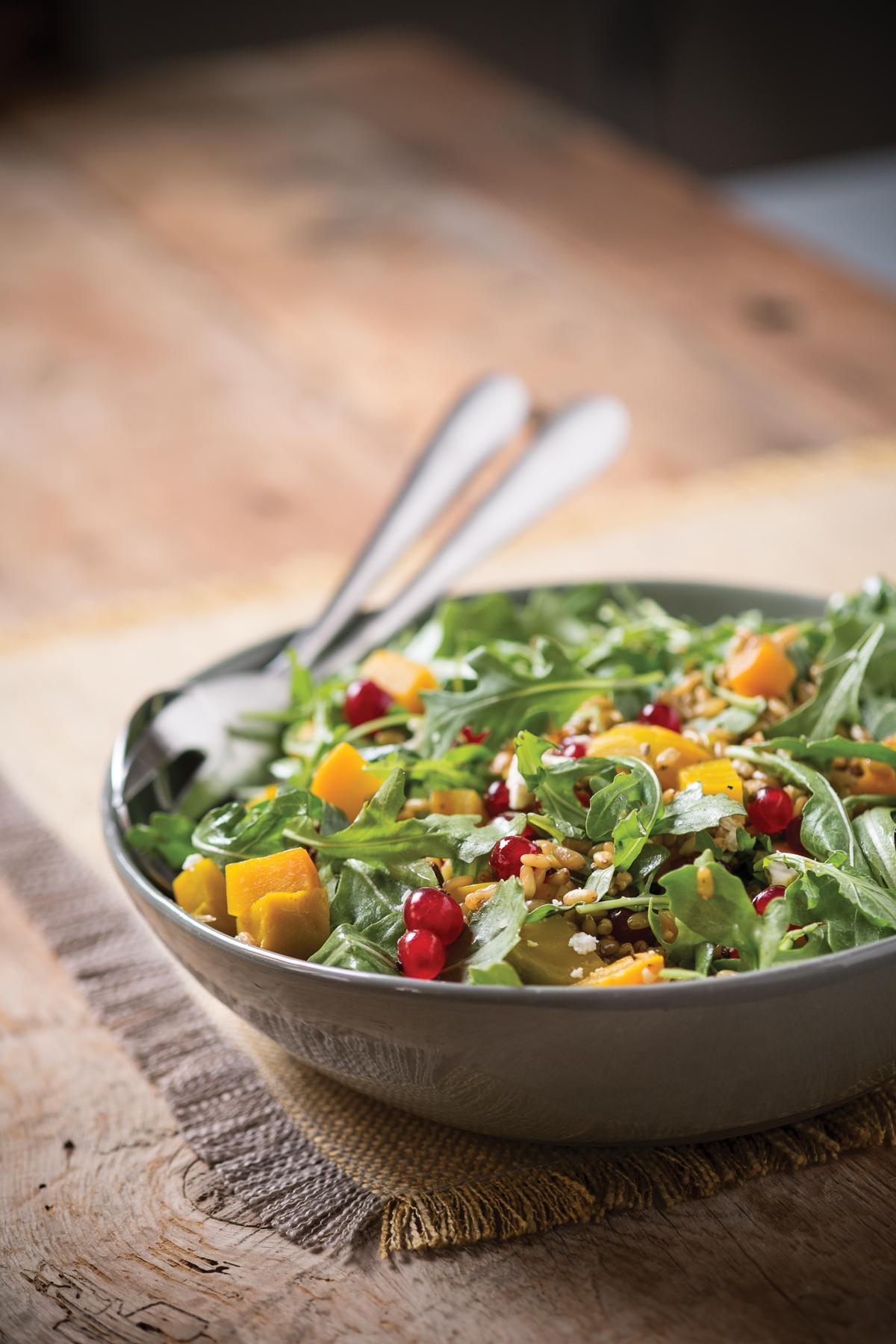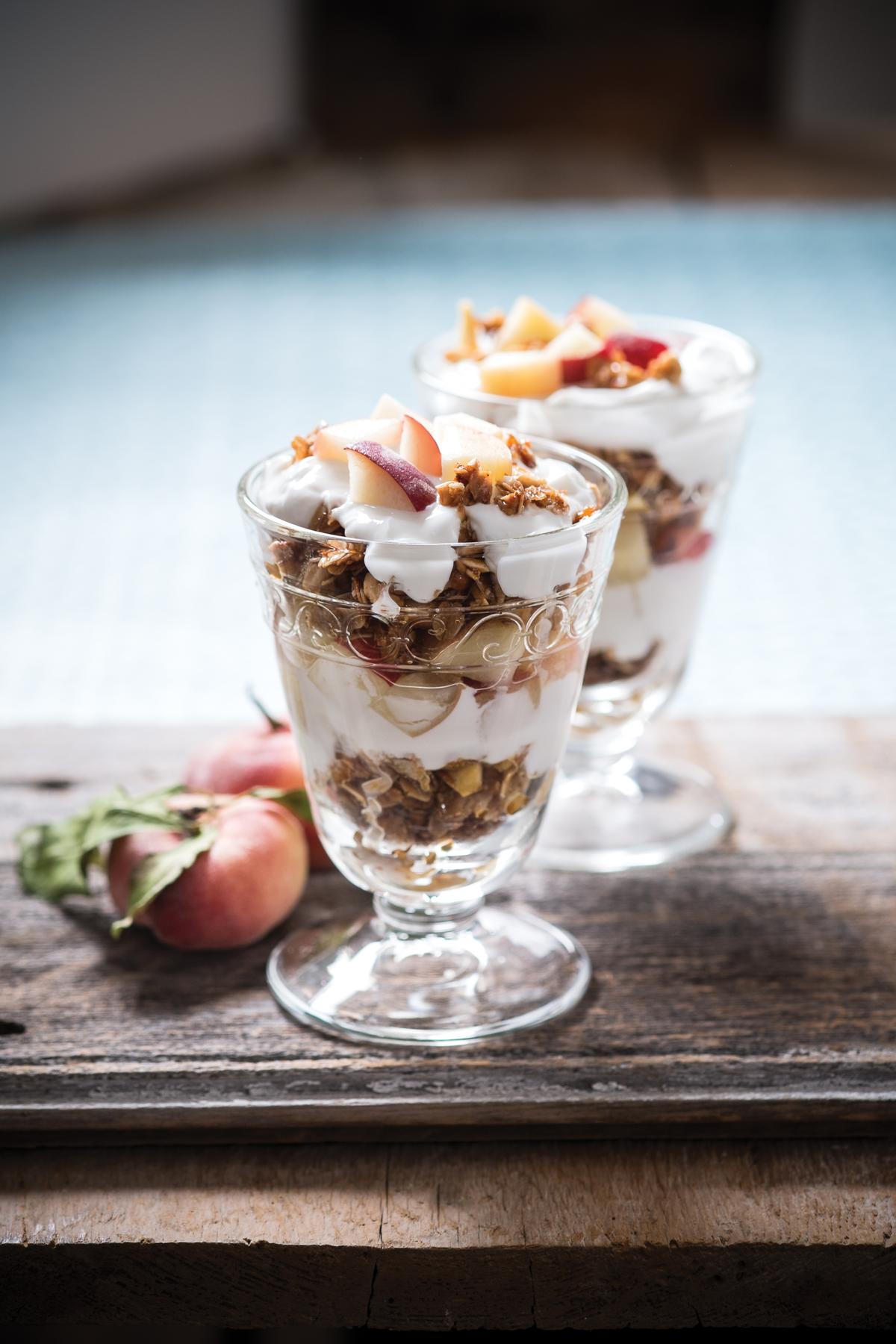A bear in summer is a lucky bear—if it lives anywhere near the wild blueberry picking grounds of Berried Treasures farm in Cook Falls, in the western Catskills.
These wild blueberries, picked with pluck from the same bushes as these gourmand bears do, are something wonderful. They are much smaller than cultivated berries, and their sweetness is deeply concentrated.
“We have to fight off the bears for them,” said farm owner Franca Tantillo. “You hear them rustling in the bushes.”
It might bring back some literary memories for anyone who has ever read, or had read to them, “Blueberries for Sal,” a children’s book in which a mother and child, and a mother bear and bear cub, set off to pick blueberries on different sides of a hill. Distracted by their love for blueberries, child and bear cub each temporarily end up with the wrong mother. (All ends well, never fear.)
Like child and bear cub, the best way to eat this kind of blueberry is “by the handful,” as Tantillo suggests. Easier than risking the terror or wrath of bears would be to visit her farm stand on Fridays at Union Square Greenmarket.

Berries from Berried Treasures Farm Red currants, on the tart side, can be used in jams or in syrups (Samira Bouaou/Epoch Times)
Blueberries are just one of the jewels in the crown at Berried Treasures. Another is her Tri-star strawberries, crossed with wild ones and developed over 10 years. Rather than giving fruit once a year, they bear fruit over three seasons. Right now, “king berries” are available, with no white core in sight—but rather all red, dripping juice, the very essence of what I imagine it means to live your life as a strawberry meaningfully.
If tasting is believing, as is Tantillo’s mantra, the reactions say a lot. Those I’ve fed her strawberries to can barely manage to part their lips to say amazing.
Also at Union Square Market is Toigo Orchards on Fridays, in Shippensburg, Pa., known for its stone fruit, which is sold to chefs and at farmers markets. The weather this year has made for a late-starting season, but the harvest is delicious: yellow nectarines, with their slight tartness, white peaches with an intense floral aroma, and donut peaches, around for a short three-week season.
These are all a heavenly mess to eat. (Watch out for your neighbor when you take a first bite. The juices will fly.)
These fruits can also be used in savory as well as sweet dishes, as in the following recipes. Red Jacket Orchards’ Brian Nicholson shares recipes for a freekeh salad using red currants, an apricot-rosemary sauce (their apricots are famous) to pair with pork chops, and a wonderful way to enjoy doughnut peaches.

Yellow peaches at the Toigo orchard stand, at the Union Square Greenmarket (Samira Bouaou/Epoch Times)
RECIPE
Freekeh Salad With Red Currants, Arugula, Golden Beets, and Feta

(Steve Legato)
A green spelt berry with Middle Eastern origins, freekeh is roasted over hot coals while in the hull, giving it a characteristic smokiness. Fresh red currants are often too tart to eat raw, but in this salad their brightness really balances the sweet beets, salty feta, and bitter arugula. If you can’t find freekeh, any sturdy, nutty grain like farro, wheatberry, or even brown rice will do.
Makes 4 servings
1 pound / 455 g golden beets, peeled and cut into 1/2-inch / 1.3 cm cubes
1 1/2 tablespoons plus 1/4 cup / 80 ml extra-virgin olive oil, divided
3/4 teaspoon kosher salt, divided, plus more as needed
Freshly ground black pepper
1 1/4 cups (8 ounces / 230 g) freekeh
1/2 cup / 80 g fresh red currants, rinsed
2 teaspoons honey
1 tablespoon red wine vinegar, preferably aged
2 tablespoons minced garlic scapes, or 1 small clove garlic, minced
4 cups / 110 g fresh arugula, torn into pieces
3 ounces / 85 g feta cheese, crumbled (3/4 cup)
Preheat the oven to 400°F / 205°C. Toss the beets with 1 1/2 tablespoons / 20 ml of the oil, 1/4 teaspoon of the salt, and black pepper to taste. Spread the beets on a baking sheet in a single layer and roast, tossing occasionally, until tender, 30 to 40 minutes.
Meanwhile, bring a large pot of salted water to a boil. Add the freekeh and cook until tender but chewy, 25 to 30 minutes. Drain well.
Toss the currants gently with the honey. In a small bowl, whisk together the vinegar, garlic scapes, and the remaining 1/2 teaspoon salt. Whisk in the remaining 1/4 cup / 60 ml oil. Stir in the currant-honey mixture.
In a large bowl, toss together the arugula, beets, freekeh, and feta. Gently toss in the dressing. Taste and add more salt and pepper, if necessary. Serve immediately.
Reprinted with permission from Fruitful © 2014 Brian Nicholson and Sarah Huck, Running Press, a member of the Perseus Books Group
============
RECIPE
Charred Pork Chops With Apricot-Rosemary Sauce

(Steve Legato)
When it’s time to harvest apricots, the bounty is often plentiful but short-lived. You can eat them my favorite way, standing over the kitchen sink, or you can use them in cooking. Their sweet-tart flavor works well against rich and smoky pork. With the rosemary growing just feet from the grill, this sauce was a natural pairing. It would also be delicious over grilled lamb chops, served with a simple, cardamom-scented pilaf.
Makes 4 servings
1 tablespoon extra-virgin olive oil, plus more as needed
1/4 cup / 40 g finely chopped red onion
Kosher salt, as needed
2 garlic cloves, finely chopped
1 tablespoon minced, peeled fresh ginger
1 teaspoon finely chopped rosemary
1 pound / 455 g ripe apricots, pitted and diced (21/2 to 3 cups)
2 tablespoons Apricot Stomp (recipe follows), or fresh orange juice
1 to 3 tablespoons good-quality honey, as needed
Freshly ground black pepper
4 (8-ounce, 1-inch-thick / 230-gram) center-cut, bone-in pork chops, 1-inch / 2.5-cm-thick
Heat 1 tablespoon of oil in a heavy-bottomed saucepan over medium heat. Add the onion and a pinch of salt. Cook, covered, until the onions are soft and translucent, 5 to 10 minutes. Uncover and stir in the garlic, ginger, and rosemary; sauté for 2 minutes.
Stir in the apricots, juice, 2 tablespoons of water, and 1 tablespoon of the honey. Simmer until the fruit breaks down to a chunky-smooth consistency. Season to taste with salt and pepper. Stir in more honey, if desired. Cover the pot and keep the sauce warm over low heat.
Preheat a grill to medium-high. Season the pork chops generously with salt and pepper and brush them with oil, then transfer them to the grill and cook, covered, until undersides are golden brown, about 5 minutes. Turn the pork chops and continue to cook until their interior is no longer bright pink (145° F / 63° C on an instant-read thermometer), about 5 minutes more. Remove the pork chops from the grill and let them rest on a platter for 5 minutes. Serve the pork chops with warm apricot sauce spooned over top.
Apricot Stomp
With its rich, nectar-like quality and a beautiful sherbet color, this juice is the true essence of apricot. Because apricots can have an almost custardy texture, you might sometimes read that they aren’t a great choice for juicing. Ignore that advice. As long as you mix the apricots with something juicy and sweet, such as apples, you'll have great results, though I usually run the apricot pulp through the juicer a second time to make sure I’ve squeezed out every last drop of flavor.
Makes 2 cups / 470 ml
11/2 pounds / 680 g sweet apples
8 ounces / 230 g apricots
1 teaspoon freshly squeezed lemon juice
Thoroughly rinse the fruit. Core the apples and cut them into chunks that will just fit through the juicer’s feed tube; quarter the apricots and discard the pits. Sprinkle the lemon juice into the bottom of a liquid measuring cup or whatever vessel you will be juicing into.
Following the manufacturer’s directions, pass the apples and apricots through the juicer into the measuring cup, alternating between the two fruits. Run any wet pulp back through the juicer. Whisk the juice quickly to incorporate the lemon juice. Scrape off the foam, if desired. Pour the juice into chilled glasses and serve immediately.
Reprinted with permission from Fruitful © 2014 by Brian Nicholson and Sarah Huck, Running Press, a member of the Perseus Books Group.
=====
RECIPE
Doughnut Peaches With Sheep’s Milk Yogurt and Honey-Almond Granola

(Steve Legato)
Squat, pastel-colored doughnut peaches are one of our most popular varieties. Super juicy and a bit sweeter than other peaches, fitting neatly into the palm of your hand, they’re a fantastic three-bite snack at the park, beach, or while waiting in line at the farmers market. Their syrupy, gushing juices form an instant sauce, one that’s especially nice over a tangy sheep’s milk yogurt. This granola serves more than you need here; stash any extra in an airtight jar in your pantry for up to three weeks.
Makes 4 servings
Granola:
11/2 cups / 170 g rolled oats
3/4 cup / 60 g chopped raw almonds
1/2 cup chopped / 60 g raw cashews
1/2 cup / 30 g unsweetened coconut flakes
1/3 cup / 80 ml honey, plus more for drizzling
1/4 cup / 60 ml vegetable oil
2 tablespoons packed light brown sugar
1/4 teaspoon ground cinnamon
1/4 teaspoon ground cardamom
4 ounces / 110 g mixed dried fruit, chopped (1/2 cup)
Yogurt Parfait:
2 cups / 470 ml plain sheep’s milk yogurt
8 doughnut peaches, pitted and diced (2 cups / 680 g)
To make the granola, preheat the oven to 300°F / 150°C. In a large bowl, combine the oats, nuts, coconut, honey, vegetable oil, sugar, cinnamon, and cardamom. Spread the mixture on a large, rimmed baking sheet. Transfer the baking sheet to the oven and bake, stirring every 10 minutes, until the mixture is dry and rattles around on the pan when it is shaken, 30 to 40 minutes. Remove the baking sheet from the oven and let the granola cool to room temperature. Stir in the dried fruit.
Spoon a small amount of granola into each of 4 parfait glasses. If you don’t have parfait glasses, any squat glass or small glass bowl will do. It should be clear, however, so that the layers will be visible. Spoon 1/4 cup / 60 ml of yogurt into each glass, followed by another sprinkling of granola, and a layer of diced peaches. Repeat the layering, ending with a final sprinkle of granola. Drizzle honey over the top of each parfait and serve immediately.
Reprinted with permission from Fruitful © 2014 Brian Nicholson and Sarah Huck, Running Press, a member of the Perseus Books Group





